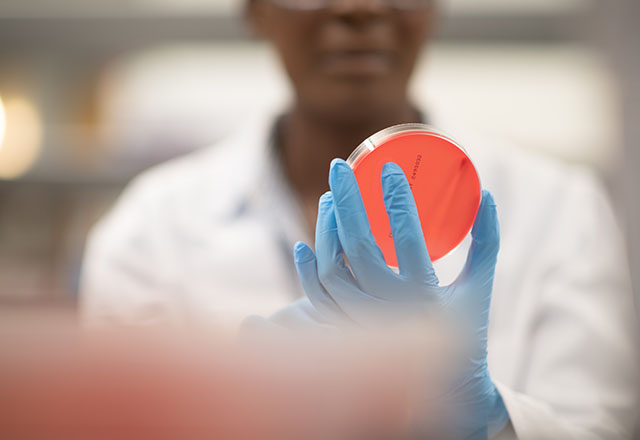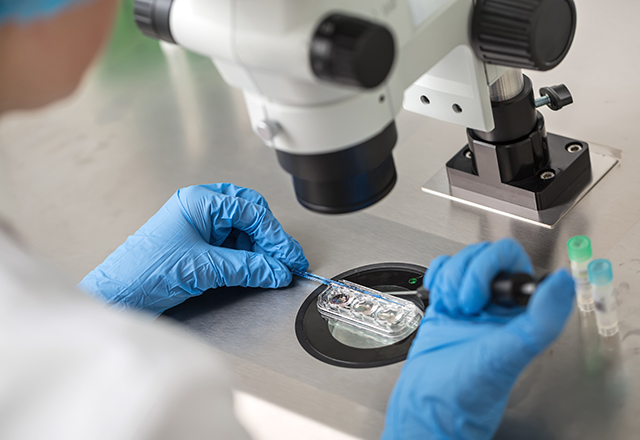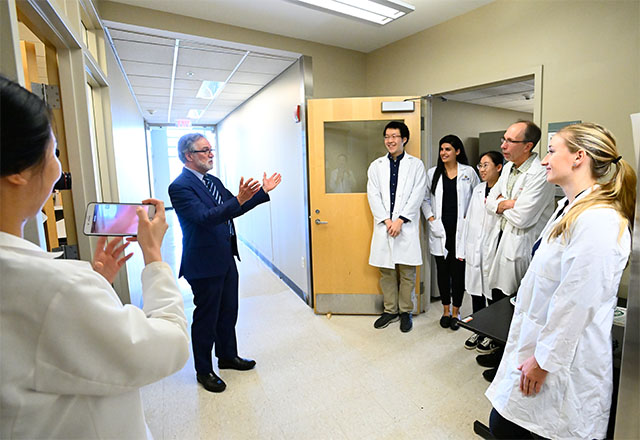Physician-scientist Gregg Semenza received the 2019 Nobel Prize in Physiology or Medicine for discovering how the body's cells sense and react to low oxygen levels. This discovery may lead to treatments for diseases such as cancer, diabetes and heart disease.
Semenza shares the award with William G. Kaelin Jr., of the Dana-Farber Cancer Institute, and Peter J. Ratcliffe of Oxford University.
Johns Hopkins Medicine 2019 Nobel Prize Celebrations | Gregg Semenza
Celebrations to honor Gregg L. Semenza, M.D., Ph.D., who was awarded the 2019 Nobel Prize in Physiology or Medicine by the Nobel Assembly at the Karolinska Institutet for his discovery on how cells respond to low oxygen levels, which have the potential to result in treatments for a variety of illnesses.
The Discovery

It all begins with oxygen. This life-supporting element is critical for every cell in the body to make energy, which powers a hundred trillion cells to work together in the body. However, under a number of circumstances, including some diseases, cells in the body must respond to reductions in the amount of oxygen they are exposed to.
For example, when exposed to low levels of oxygen, cells in the kidney trigger synthesis of more red blood cells, and cancer cells survive and multiply in an environment that has low oxygen levels when other types of cells do not. Semenza and others set out to understand why these events happen.
What Semenza discovered was a protein called hypoxia-inducible factor 1, or HIF-1. This protein guides the way cells sense and adapt to low oxygen.
How the Discovery Helps People

Semenza and other researchers want to apply the understanding of how HIF-1 works to development of new treatments for diseases. With some diseases, researchers are studying if HIF-1 can help stop diseased cells, such as cancer, from surviving in low oxygen environments. In other cases, such as kidney disease, researchers are testing if HIF-related treatments may be used to treat a complication of kidney disease called anemia, which causes the body to produce too few oxygen-carrying red blood cells. Such treatments could encourage red blood cells to grow, bringing life-sustaining oxygen to cells in the body.
In addition to cancer and kidney disease, this discovery of HIF-1 has the potential to result in treatments for diseases such as blood disorders, blinding eye diseases, coronary artery disease and other conditions.
Research: A Dream Job
From Nobel Laureates within the School of Medicine to the students they inspire, hear why research continues to excite them.
It’s a dream job because we’re able to follow our interests and our ideas, be creative, design experiments to test hypotheses, and ultimately, if we’re really lucky, to apply what we’ve learned to clinical problems.
Gregg Semenza, Nobel Laureate
They say you can get used to anything given enough time. Yet, I still haven’t gotten over my awe of sharing the halls of Johns Hopkins with Nobel Laureates.
Kyla Britson, Ph.D. candidate in cellular and molecular medicine
It’s been great to have this freedom to pursue this curiosity-driven science because that’s what I like to do, I like to follow the next most interesting thing that is there, rather than having a particular grand plan, and that’s what’s been particularly exciting.
Carol Greider, Nobel Laureate
Johns Hopkins and the Nobel Prize
-
29
Nobel laureates affiliated with Johns Hopkins
-
16
Nobel Prizes in physiology or medicine
-
4
Nobel laureates currently at Johns Hopkins
More about Dr. Semenza
- Dr. Semenza's Bio Page
- PNAS Profile: Dr. Semenza
- The McKusick-Nathans Institute of Genetic Medicine
- The Johns Hopkins Institute for Cell Engineering





